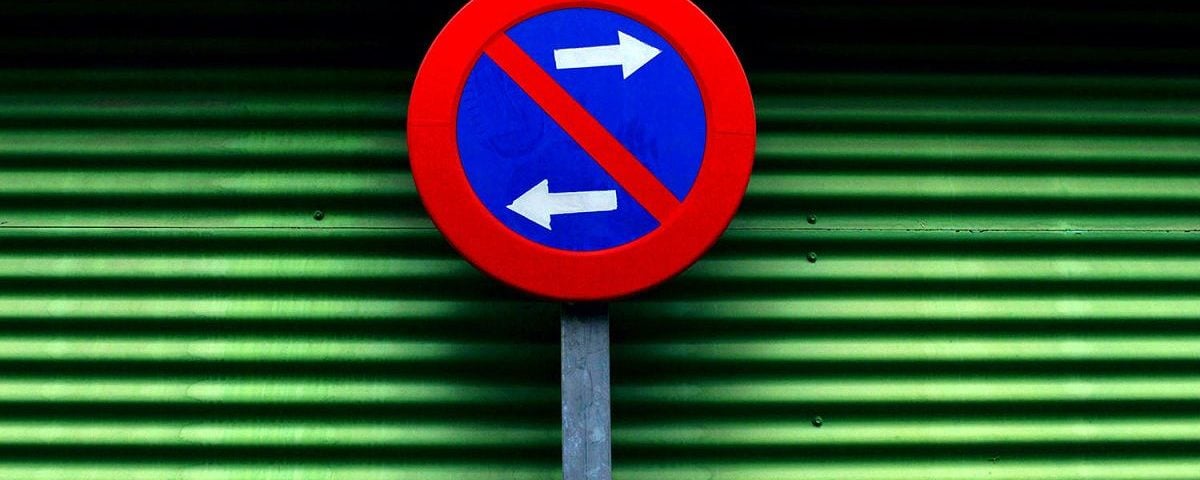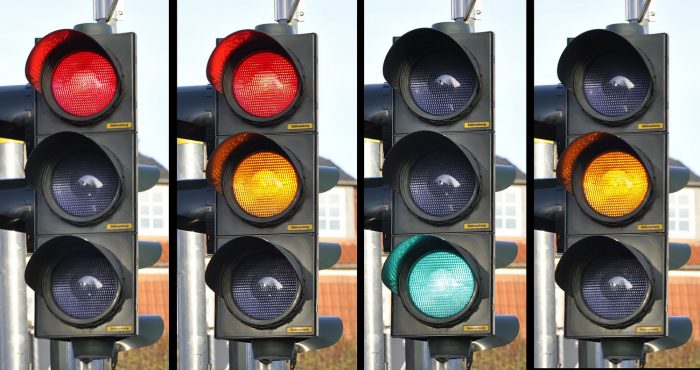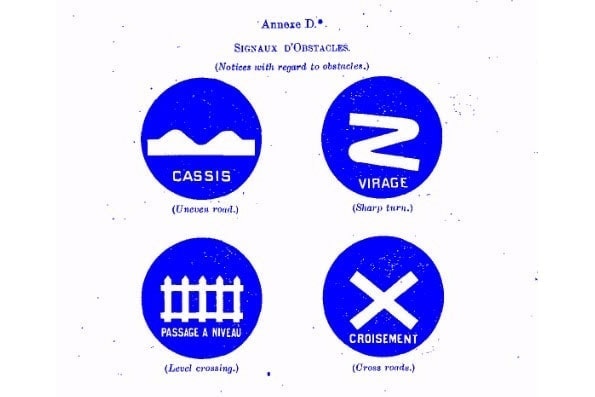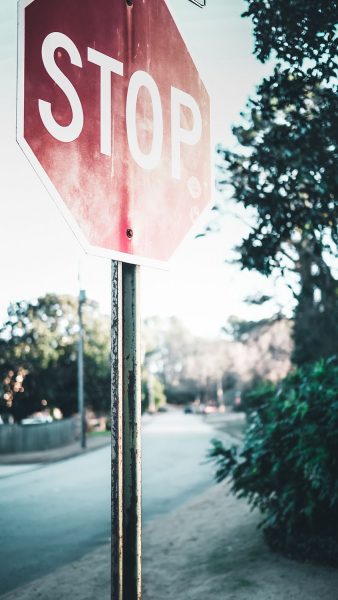
Traffic Signs Don't Depend on Language – Or Do They?
A red octagon with four white letters that say STOP. We may not know English, but everyone understands that, on the road, that means we have to stop. Everyone? The stop sign is one of the most international signs around, but the same is not true of others.
19 of July of 2019
In Australia, no parking is marked with a black P crossed out and surrounded by a red circle. In most of Latin America, the STOP sign says PARE. And the numbering of roads in the United States is indicated by a white number on a kind of blue shield with a red upper stripe – that iconic sign for Route 66 prized by tourists. Where do these differences come from? What’s been done to reduce them?

The colors of traffic lights haven’t always meant the same thing. / Wikimedia Images via Pixabay
Red, yellow, green
Traffic lights aren’t the same all over the planet. Some are to the right of the road. Others hang in the middle of intersections. However, almost all over the world, green means go, yellow means caution (and not “step on the accelerator before the light changes”), and red is a mandatory stop. But that hasn’t always been the case, nor are those the meanings that some cultures associate with red, yellow, and green.
The first known traffic light for a roadway was put up on December 9, 1868, at the intersection of Bridge Street and Great George Street, near London’s Big Ben. That traffic light only had lights (which ran on gas) at night, and these were red (stop) or green (caution). The reason for those colors has to do with trains and wavelength.
Red is the visible color with the longest wavelength. That is, of the colors that the human eye can perceive, it is the one that can be seen from the greatest distance. Therefore, the first lighted STOP signals for trains, which had to be visible from afar to allow for braking, were red. The green light for precaution was changed to yellow right away, another color with a longer wavelength. The first yellow light was installed in Detroit in 1915, and that was already for regulating vehicular traffic in the city.
One convention to unite them all
Although the first traffic light was set up in London, an unfortunate incident kept the invention off the road for years. By the time it was reinstalled, it was made by copying the system that had been developed in the United States. Red, yellow, and green became commonplace in the early decades of the 20th century.
In those years, the first efforts were made to internationally regulate road traffic, which hadn’t stopped growing since the motor vehicle’s first appearance. On October 11, 1909, Paris hosted the signing of the Convention with Respect to the International Circulation of Motor Vehicles. The convention addressed aspects such as the need for cars to have two brake systems and an apparatus (a steering wheel) that would allow for quick, safe directional changes. And the first international signals were agreed on (pictured below).

First signs set by the 1909 Paris Convention. / Wikimedia Commons
That agreement was signed and ratified, first by Spain, Germany, Austria-Hungary, Bulgaria, France, Great Britain, Italy, and Monaco, and soon after, Russia, Belgium, the Netherlands, Romania, and Portugal joined them. That convention was the first of many that aimed to unify signals and standards for regulating traffic around the world. A goal that, to this day, has still not been achieved.
Vienna as a basis for 68 states
After the first meeting, there were new meetings in Paris, Washington, and Geneva for on the same subject. On October 7 and 8, 1968, under the umbrella of the United Nations, the meeting that was to be definitive was held in the Austrian capital: the Vienna Convention on Road Signs and Signals. The goal – an ambitious one, to be sure – was the unification of the codes of shapes, colors, measurements, and symbols for signals around the world.
A consensus was reached and implemented, particularly in Europe. On that day, October 8, 32 countries signed the agreement, though not all ratified it (Spain has still not done so despite having signed and largely implemented it). Today, 68 states have joined it either wholly or in part. In addition, other road codes follow similar visual standards. This is the case in the United States, where, with the differences it has, is used as a standard in many states across the Americas.

The STOP signal is one of the most international. / Luke van Zyl via Unsplash
The Vienna convention established that the red triangle or yellow diamond meant danger; that the inverted triangle means yield; and that the red circle with a diagonal stripe is used for all prohibitions. And, of course, the red octagon with the word STOP requires us to stop, even if it looks like no other vehicles are around on the road we’re merging onto or need to cross.
There was a time when signs did depend on language. But the need to be able to drive across a border imposed the logic of standardization. Today, despite their differences, the signs are easy to understand for almost everyone. They make up a code that allows us to drive safely and trust other drivers (most of the time, anyway).





There are no comments yet